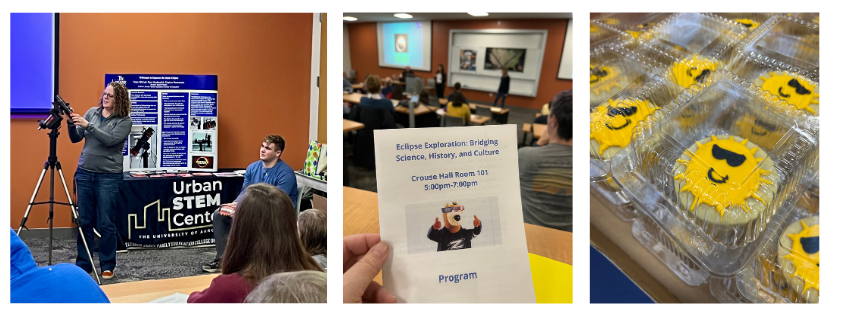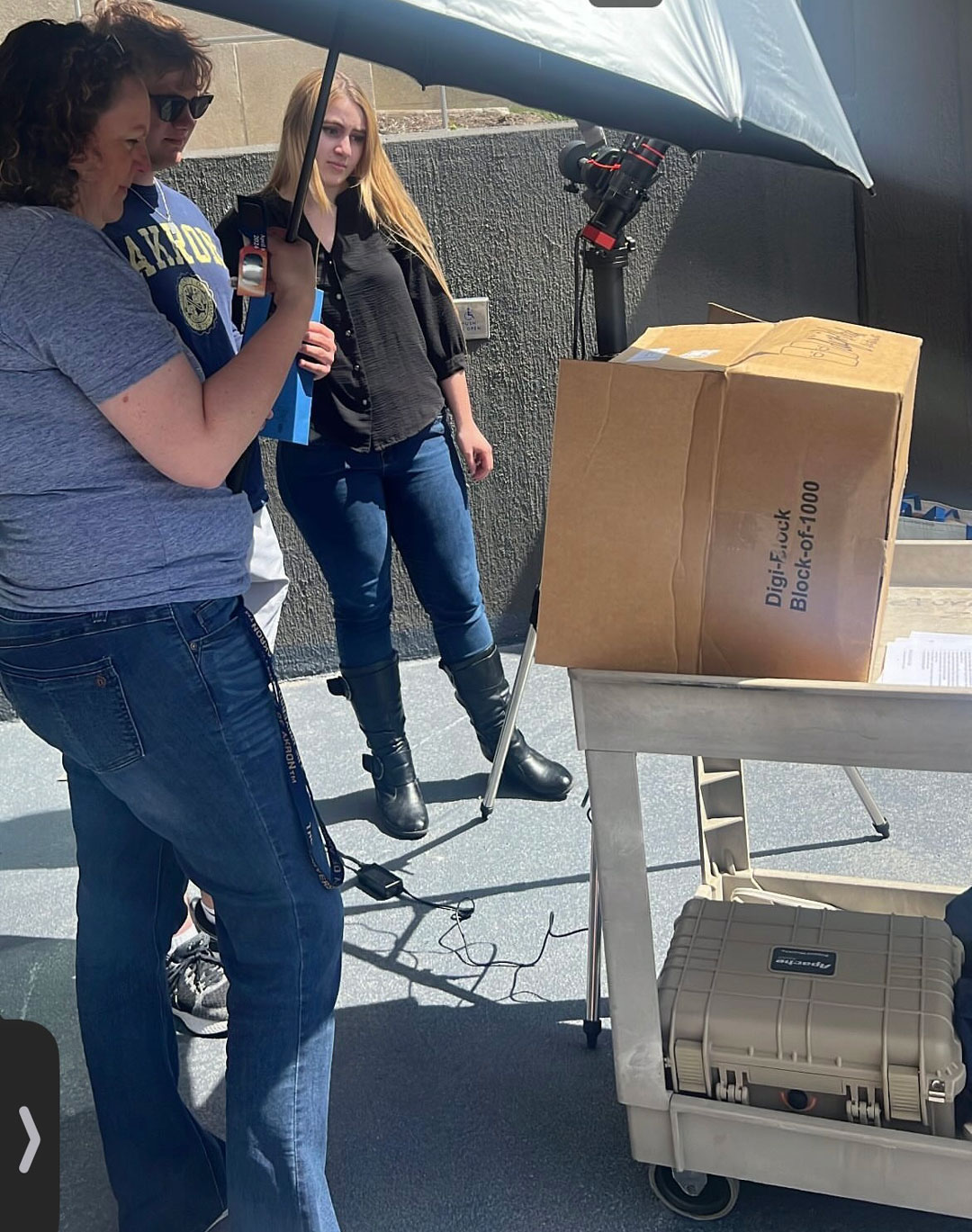
Successful pre-eclipse event in Crouse Hall

Over 100 attendees were treated to a journey into the history, physics, and cultural significance of solar eclipses last Wednesday, April 3 at Crouse Hall. It was a hub of celestial exploration as BCAS, the Urban STEM Center, and the Cummings Center for the co-hosted the event centered around the awe-inspiring phenomenon of solar eclipses.
Dr. Sergei Lyuksyutov shed light on the astrophysics of the April 8 eclipse. Dr. Kevin Kern provided a glimpse into ancient eclipse prediction methods. Dr. Mike Levin shared readings from 5th to 6th century B.C. Dr. Ben Yu-Kuang Hu delved into the profound link between the 1919 solar eclipse and Einstein's general theory of relativity.
The event also honored the Indigenous cultural significance of major events like solar eclipses as they heard from Shianne Eagleheart of the Haudenosaunee-Seneca nation.
Attendees also chatted with Dr. Karen Plaster and students from School of Education, and saw the telescope to be used on 4/8 to record the eclipse for the Einstein Dynamic Eclipse Broadcast Initiative.
Everyone received solar eclipse viewers and a cookie.
- At the conclusion of the event at Crouse Hall, attendees were invited to walk across the street to Guzzetta for a free eclipse-themed School of Music concert -- Fiat Lux “Let There Be Light” -- by UA’s Wind Symphony
Eclipse with the Zips: Solar eclipse watch party

Zips gathered outside Crouse Hall and the Jean Hower Taber Student Union and on Buchtel Common to join the Urban STEM Center, Department of Physics and the Buchtel College of Arts and Sciences for a solar eclipse watch party. Students from 88.1 FM WZIP provided tunes and students from ZTV live-streamed the eclipse on its YouTube channel.
.png)
Taking pictures of the eclipse

.jpg)
.jpg)
The Urban STEM Center and LJFF School of Education students and faculty used data gathering equipment along the path of totality to capture the images. This work was funded by NASA and the National Science Foundation and will ultimately allow scientific analysis of the sun’s inner corona. Students gaines invaluable insights from this first-hand experience and can apply them to engage their future students in other citizen scientist activities.
